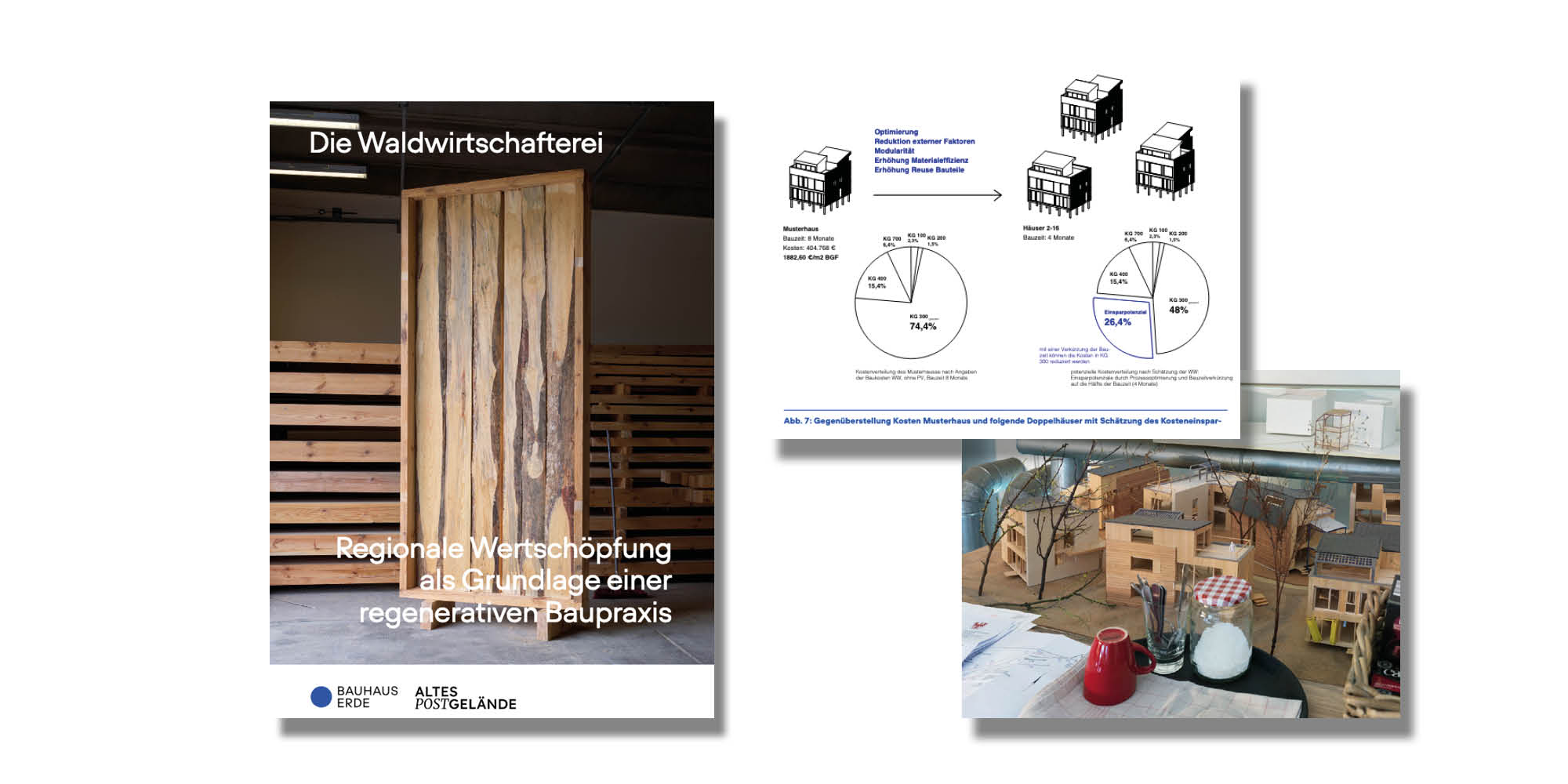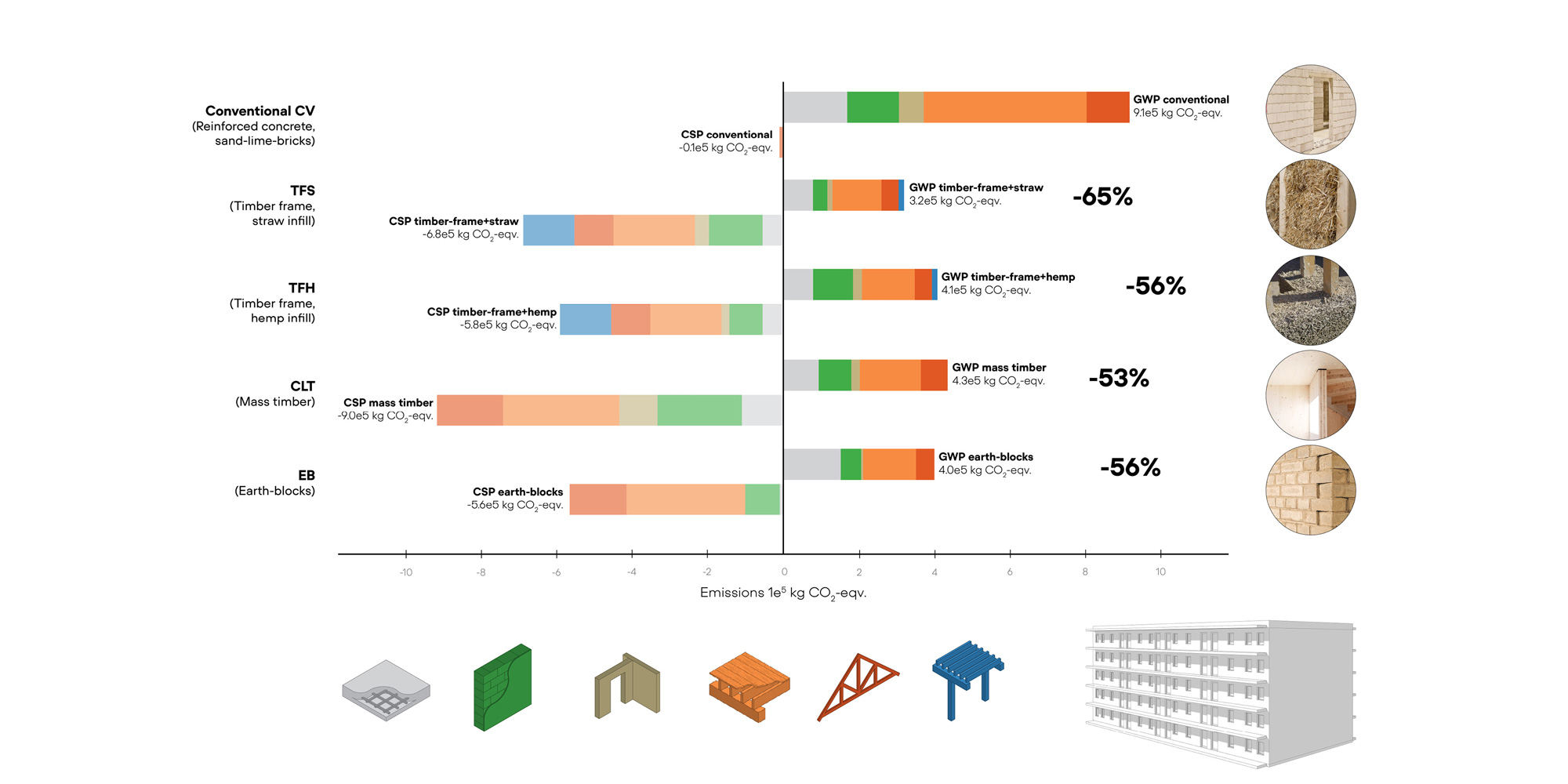
All articles
Rural Resources Workshop: A Hands-on Exploration of Circular Building
Date
17/5/2024
Read time
0
minutes
The need to rethink the design and construction of our local built environment in the face of the climate emergency is becoming ever more apparent. We can start by asking some fundamental questions about the resources at our disposal. What local knowledge, networks, and materials exist in the areas around Berlin that can contribute to a regional and regenerative building culture? How can we reclaim materials that would otherwise be wasted and integrate them into the buildings of tomorrow?
At the beginning of May, the Bauhaus Earth Innovation Lab, together with the Department of Architecture and Design at the Technical University of Munich and the Academy of Fine Arts in Szczecin, held a hands-on workshop to explore these questions. Researchers and students experimented with reclaiming clay from a historic building by salvaging it from the site, shaping and pressing it into unfired blocks, and testing the results.

Exploring the local context
As part of the seminar “Rural Resources” from the Technical University in Munich, students and professionals from science, architecture, and art gathered in Gerswalde, Brandenburg. There, the ruins of a historic half-timbered building provided the setting for practical investigations into regenerative building practices.
The students received input from Professor Niklas Fanelsa, Christian Gäth and Micha Kretschmann from the Bauhaus Earth Innovation Lab, and Dr. Agnieszka Polkowska from the Arts Academy in Szczecin. Prof. Fanelsa has long-standing connections with the town and region, including through his studio Atelier Fanelsa. Dr. Polkowska led the students in ethnographic mapping and “deep mapping” of the local soils from a social, scientific, and spatial perspective.
Bauhaus Earth took the lead in repurposing the earth-based demolition waste of the ruin. By reclaiming, sorting, crushing, slaking, and pressing the material, the students were able to produce over 150 compressed earth blocks. These will contribute to the future reconstruction of the site. The blocks consist of 100 per cent recycled materials from the site and require no additional binders or firing.
From ruin to resource: The potential of reclaimed earth-based materials in Brandenburg
After manufacturing, the team delved into the testing and evaluation of the blocks’ performance. Here, the students tested compressive strength and water resistance and compared them to the benchmarks required for load-bearing earth masonry. The heterogeneity of the reclaimed material led to varying results. Nonetheless, the overall outcomes suggested that the blocks have the potential to meet the required standards. While blocks with aggregates of fired brick, sand, and lime-based mortar just missed the benchmarks, blocks that were produced from recycled loam bricks passed all tests.
Ultimately, the learnings from the Rural Resources workshop in Gerswalde substantiate previous research results from Bauhaus Earth on the suitability of the geology of the Berlin-Brandenburg region for providing earth for load-bearing masonry products. With earth-based materials becoming an increasingly important pillar of regenerative architecture, the Bauhaus Earth team continues to explore how a decentralised network of sourcing, manufacturing, and construction of these materials can be made possible.
Impressions from the Rural Resources workshop
Press Gallery
Partners


-web-(c)-414films.jpg)

.jpg)

